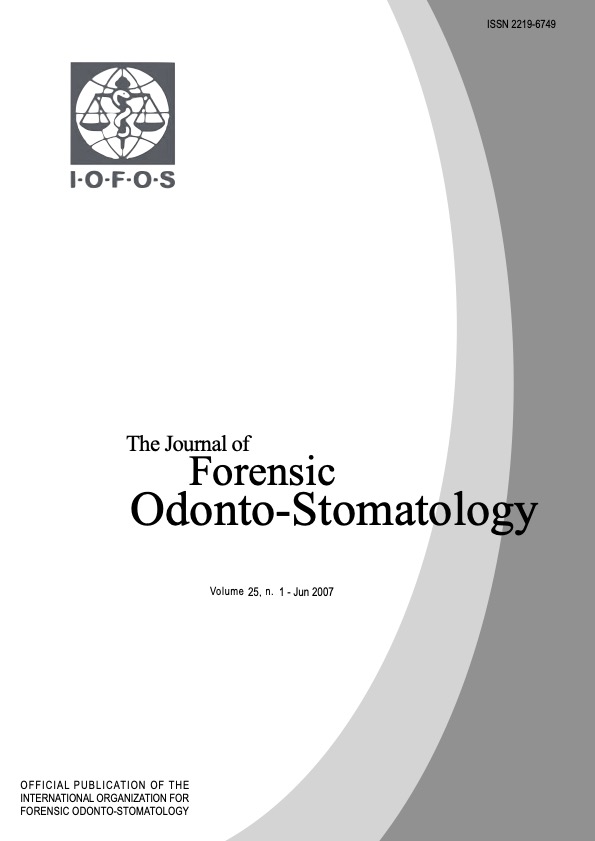Data transmission in dental identification of mass disaster victims
Abstract
Dental evidence, especially from radiographs, has been found to be an effective method in personal identification. Previously, it has been shown that wireless personal digital assistants (PDA) can be used to transfer digitized radiographs. The purpose of this study was to set up a secure and reliable mobile connection for transferring dental digital images for disaster victim identification, and to test this new way of working in Phuket, Thailand, following the December 2004 Asian Tsunami disaster. Material and methods: Digital dental radiographs and clinical images were transferred in two separate sets using secured data transmission from a server in Finland to PDA terminals in Thailand. The mean size of the images in test 1 and test 2 were 90.7 kB and 88.1 kB, respectively. Results: The mean speed of the transmission was 3.7 kB/s with the Nokia 9500 and 3.4 kB/ s with the Qtek 2020i. The quality of all the pictures was found to be good enough for dental identification purposes. Conclusions: Wireless personal digital assistants (PDA) together with data secure transmission of digital clinical information could be used in order to assist in disaster victim identification in areas where GSM cellular networks are available.

